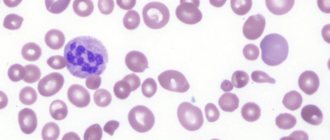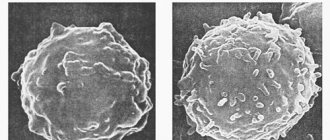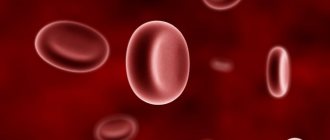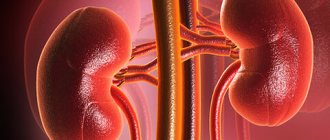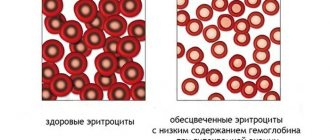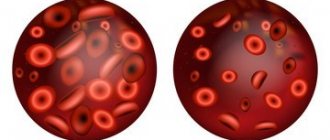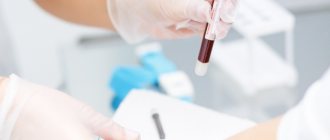HIV infection is an infectious process caused by human immunodeficiency viruses. According to official statistics from the World Health Organization, at the end of 2020, there were about 37 million people living with HIV worldwide.
Of particular concern is the fact that of all infected patients, only 21.7 million people receive lifelong antiretroviral therapy.
It must be taken into account that, despite the fact that HIV infection is an incurable disease, timely initiation of antiretroviral therapy and strict adherence to treatment regimens prescribed by the doctor can significantly improve the patient’s quality of life, reduce the risk of complications and increase the patient’s life expectancy.
What are the early manifestations of HIV infection?
Signs of primary HIV infection are very minor, similar to mild flu or atypical infectious mononucleosis with swollen lymph nodes, unclear fever and rash. The first signs of HIV in men and women do not differ, since the manifestations are typical for any viral infection - general malaise for a week with respiratory manifestations in the form of a slight runny nose and sore throat, like a common acute respiratory infection. This stage is called “early HIV infection.” The human immune system has not yet responded to the virus.
At this time, the virus multiplies and there are already antibodies in the blood. Therefore, the stage is called seropositive.
During this period, it is necessary to identify a latent infection and control the replication of the virus, because treatment started at the wrong time significantly reduces life expectancy.
HIV - symptoms
Signs of infection depend on the stage of the disease. The incubation period of the pathogen can take from two weeks to six months.
For reference. The development of the acute phase occurs latently or with the appearance of nonspecific symptoms.
About seventy percent of patients note:
- development of moderate prolonged fever,
- enlarged lymph nodes,
- the appearance of an erythematous-maculopapular itchy rash,
- pain in muscles and joints,
- nausea.
How does the latent stage of HIV progress?
The clinical symptoms of initial HIV go away, but the life of the virus continues; from six months to a year, the host’s immunity will react to it with increased activity - this is a variant of acute infection without clinical symptoms.
The subclinical or latent stage lasts for years. During this period, antibodies to the virus are found in the blood, sometimes more of them, sometimes less under the influence of treatment. There are no or almost no symptoms: a lymph node may become enlarged somewhere, a headache may bother you at times, an incomprehensible malaise comes and goes, but by and large the condition is normal. During this period, damage to the immune defense slowly progresses.
The Center for Infectious Diseases “Medicine 24/7” uses the most effective domestic and foreign treatment methods, which can significantly improve the quality of life of our patients and maintain their activity.
What is a retrovirus?
It is genomic DNA and stores genetic information not only as DNA (most other organisms use only DNA) but also as RNA (ribonucleic acid).
Today it is customary to distinguish the following routes of HIV infection:
- sexual contact without using protection
- perinatal route of infection (observed in children)
- during blood transfusion (blood transfusion)
- when using contaminated syringes (more often in injection drug addicted patients)
When HIV enters human cells, it releases ribonucleic acid and replicates (copies) the DNA from HIV RNA using an enzyme called reverse transcriptase.
The resulting DNA is incorporated into the DNA of infected cells. This process is reverse, as it involves human cells to replicate RNA and DNA.
Other RNA viruses (infections), such as poliovirus, influenza virus, measles virus, unlike retroviruses, do not replicate DNA after entering the cell. These viruses produce ribonucleic acid replicas of the original RNA.
In HIV-infected cells, each time cell division occurs, the DNA of the integrated HIV is also replicated in addition to the cell's own DNA.
HIV DNA replication is in one of the following states:
- Inactive (latent) state: the virus exists, but does not have a harmful effect on the human body
- Activation state: the virus dominates the function of infected cells, it produces a large number of new HIV replications that infect other cells of the body, provoking a state of persistent acquired immunodeficiency
An important aspect of therapeutic intervention remains accurate and timely diagnosis of the disease.
The first laboratory studies of HIV pathology were carried out more than thirty-five years ago.
Modern diagnostics include the use of immunological, hematological and molecular methods for detecting the viral pathogen. The test systems used in the last century had rather limited capabilities and determined type 1 retrovirus.
Their technical capabilities did not go beyond the determination of immunoglobulin G.
As laboratory diagnostics developed and research methods improved, it became possible to detect both types of the virus.
The emergence of third-generation testing systems has significantly expanded diagnostic capabilities.
Now detection of type 1-2 virus is possible just a few weeks after infection. Such modern diagnostics make it possible to quickly prescribe antiretroviral treatment.
Reduces the risk of developing a more severe stage of the virus - AIDS - tenfold. Recent inventions include 4th generation testing systems. They are combined research methods.
The system is used to detect antibodies to both types of HIV and simultaneously detect the p24 antigen (retroviral nucleoside ester wall protein). Such capabilities of 4th generation test systems reduce the “serological window” time by at least a week. (This is the period when HIV is present in the body without the appearance of antibodies).
Why are infections in a person suffering from AIDS very severe?
With a decrease in the population of immune cells, the likelihood of opportunistic infections increases: Pneumocystis pneumonia, cytomegalovirus infection, candidiasis and toxoplasmosis, tuberculosis. During this period, HIV symptoms in men and women may differ, since inflammatory diseases of the genital organs often occur.
Opportunistic infections are caused by microorganisms familiar to a healthy person, which, against the background of a significant decline in immunity, become their worst enemies. Treatment with antivirals and highly active antibiotics helps if the level of T-lymphocytes can be raised. The lower the number of CD4 lymphocytes, the more virus in the human body. T-lymphocytes can be as low as 100 or as low as 50 cells; disease progression stops if treatment helps improve immune status and cures the infection.
Drug addicted patients are characterized by atypical variants of the course of combined infections - tuberculosis and hepatitis C and B. During periods of decrease in T-lymphocytes, the infection in an active drug addict is similar to a severe bacterial one, just as tuberculosis is similar to classic consumption: fever with tremendous chills, sudden weight loss, complete physical impotence and rapid development of the fibro-cavernous process. Hepatitis quickly leads to cirrhosis and liver cancer.
Stages of HIV infection and their symptoms
The incubation period for HIV varies depending on the health of the person who is infected with the virus. From the moment of infection to the appearance of the first signs of HIV, it can take from two weeks to three months, but there are cases when the infection manifests itself a year after infection. The time that elapses from the moment the virus enters the body until antibodies to it can be detected is called the period of seroconversion.
HIV is a virus from the retrovirus family that causes a slowly progressive disease called HIV infection. The mechanism of action is to damage the human immune system, which weakens the body's defenses.
There are several stages of pathologies caused by the human immunodeficiency virus. They differ in a variety of symptoms and signs, based on the patient's immune status and associated factors.
Conventionally, there are six stages of HIV infection:
- infection (the virus enters the body and infects the first cells);
- incubation stage (the virus cannot be detected when it is in the body);
- stage of first manifestations (occurs after the appearance of antibodies in the blood, it is easily confused with signs of other diseases);
- asymptomatic period (despite the fact that a person feels healthy, his immunity is constantly decreasing);
- stage of secondary pathologies (many diseases appear as a result of suppressed immunity);
- acquired immunodeficiency syndrome (is the final stage, after which death occurs).
Symptoms of HIV in the early stages
The first symptoms of HIV are not specific, which is why they are so easy to confuse with manifestations of other diseases. For example, the first sign of HIV is often a fever of up to 39 degrees, which is mistaken for the flu. In parallel with this, the following symptoms of HIV infection may appear:
- enlarged tonsils and cervical lymph nodes;
- increased fatigue, tiredness, lethargy, decreased performance;
- profuse sweating (mainly at night);
- sleep disturbance up to insomnia;
- nasal congestion, and, as a result, difficulty breathing;
- swelling and redness of the tonsils;
- lack of appetite;
- incessant headache.
Often, HIV in the early stages is confused with a sore throat (this is facilitated by a temperature that reaches 39 degrees with HIV, hyperemia of the tonsils and enlarged lymph nodes). Since the symptoms of HIV in women and men in the early stages of the disease are the same, diagnosing the presence of infection is quite difficult. One out of three patients experiences pain in the right and left hypochondrium. After examination, an enlarged liver and spleen are revealed. In some cases, HIV manifests itself as a skin rash, small in size and without clear boundaries.
There are also cases of esophagitis (inflammation of the esophagus), as an early sign of HIV. It is this alarming symptom that is a reason for patients to see a doctor, since it is difficult to ignore - the act of swallowing is disrupted and pain appears in the chest. Diarrhea (stomach upset with loose stools), vomiting, nausea, candidiasis (thrush) and various neurological pathologies are observed. The most specific symptoms of HIV in the early stages will be a sharp decrease in body weight and the appearance of ulcers in the mouth.
The overwhelming lack of knowledge regarding how HIV manifests leads to late diagnosis of the pathological process.
The danger of the human immunodeficiency virus is that it can be asymptomatic. At this time, a person is not only unaware of his condition, but is also capable of actively infecting other people. However, despite the absence of clinically pronounced signs of the disease, antibodies to the virus can be detected in the patient’s blood when tested for HIV.
The length of the asymptomatic period depends on how severely the infected person's immune system is suppressed. The duration of the latent period, when signs of HIV do not appear, can be several years. Cases of latent disease have been diagnosed for ten years.
In different patients, antibodies to HIV are detected from 16-12 weeks after the introduction of the virus to three to six months. It is impossible to diagnose the presence of the virus earlier. The test is considered positive if antibodies and virus are present, negative if they are absent, and questionable if markers are present but there are no signs of the virus.
Symptoms of HIV in later stages
Late stages of HIV are characterized by clear signs of impaired functioning of the patient’s immune system. The functioning of the internal organs, skin and mucous membranes of the infected person is disrupted, which causes manifestations of general diseases. It is noteworthy that at this stage, HIV symptoms in men and women may differ from each other.
The state of immunodeficiency is very dangerous due to its consequences: even a common cold, which the body usually easily copes with, can cause death.
Symptoms in the later stages of HIV are severe enough to prompt a person to seek medical help. In this case, patients develop:
- Pneumonia. In this case, pneumonia is characterized by shortness of breath with slight physical exertion and a cough with increasing force. In this case, therapy with antibacterial drugs does not produce any results (one of the notable symptoms of HIV infection).
- Cytomegalovirus infection, candidiasis of the oral cavity and genital mucosa, herpetic lesions of the body, stomatitis with non-healing ulcers. These signs of HIV develop predominantly in women.
- Constant loss of body weight, which is accompanied by dyspeptic disorders, meningitis and encephalitis.
- Damage to the central nervous system. It leads, at best, to impaired concentration, absent-mindedness and forgetfulness, and at worst, to dementia and severe mental pathologies.
- Generalized lymphadenopathy. In this case, damage is observed not only to the lymph nodes of the cervical spine, but also to the entire body. Significant weight loss begins just after this process, which often helps identify the virus in the patient.
At this stage of HIV, women, in addition to the above diseases, exhibit gynecological pathologies. These include menstrual irregularities, inflammation of the fallopian tubes, dysplasia and malignant tumor of the cervix. Herpes and candidiasis occur in severe forms, which significantly worsen the patient’s quality of life, causing a lot of inconvenience.
Despite the fact that various infectious lesions in the later stages of HIV are not uncommon in men, they are characterized by a lower intensity of manifestations than in infected women.
The last stage of HIV infection is human acquired immunodeficiency syndrome. In the absence of therapy, its duration is a maximum of three years, on average up to one and a half years. Manifested by the occurrence of tuberculosis, toxoplasmosis, encephalitis, pneumonia, salmonellosis, cancer and other serious diseases.
Factors that accelerate progress from HIV infection to AIDS:
- elderly age of the patient;
- poor diet;
- Constantly high levels of stress;
- the presence of other viral diseases.
Symptoms of human immunodeficiency virus in children
If a child is infected with a virus, he often experiences delays in physical development and in the formation of psychomotor skills. Such children often suffer from infectious diseases. The disease develops much faster in children to whom the virus was transmitted from an HIV-positive mother.
Since infection of a child is possible due to defects in the placental barrier, trauma during labor and breastfeeding, every woman who plans to have a child must be tested for the presence of the virus in the body.
When does HIV become AIDS?
The next stage of the disease is AIDS, immunity progressively decreases, the virus does not respond to medications, infections occur and malignant tumors arise. AIDS lasts no more than two years.
When HIV infection is detected, regular medical supervision is necessary to monitor the life process of the virus and promptly identify its resistance to drugs. Get help from an infectious disease specialist at the Center for Infectious Diseases at the Medicine 24/7 clinic by calling. Anonymity is guaranteed.
The cause of HIV is infection with the immunodeficiency virus, which was discovered in 1982, but by that time there were already thousands of AIDS patients. Three years later, they found another variant of HIV, slightly different, since the symptoms of the disease were the same, they were simply called type 1 and type 2. Both agents belong to the family of lentiviruses, which live in animals for millions of years and do not cause disease, it is assumed that somewhere in West Africa, the first HIV was given to a person by a monkey a hundred years ago.
We will call you back
Leave your phone number
New and alternative methods for diagnosing HIV
Recently, employees at the University of Pittsburgh developed a new highly sensitive test for detecting hidden viruses - the TZA test. It requires less time and patient blood. The principle of TZA action is to search for a gene that is activated only when the virus replicates. Despite the fact that the developers are confident in the effectiveness of the test, most experts are inclined to believe that TZA will not be able to completely replace existing diagnostic methods, since it is characterized by a different mechanism of action and is not suitable for absolutely every HIV-infected patient.
How does HIV enter a cell?
The virus meticulously selects only blood cells that have CD4 antigens on their surface; apparently, it has personal biological reasons for this. And such antigens are carried by T-lymphocytes and monocytes responsible for immunity. Therefore, the more viruses, the worse a person’s immune defense.
The virus enters the blood cell with a piece of genetic code and a tool - an enzyme, which helps to assemble a complete strand of DNA from scrap materials in order to merge its genetics with human ones into one.
The viral agent does not always kill the cell, but hides in it for years, because if it destroys the host cell, it will have to go out into the blood and look for a new place to live, and at this time the medicine can kill it. Such viral hide-and-seek forces the patient to take medications for the rest of his life.
Modern diagnostic equipment at the Medicine 24/7 infectious diseases clinic allows you to conduct an in-depth examination in a short time.
Immunoblotting
In modern conditions, it is impossible to make a positive diagnosis of HIV based only on ELISA. Confirmation of the results obtained is necessary, which is performed using an immunoblotting reaction (immunoblotting, IB).
To perform IS, special test strips must be available in the laboratory. Viral proteins are applied to them. Before the analysis, the patient's blood taken from a vein is prepared in a special way.
Read also Analysis for cytomegalovirus
The resulting biological material is added to a gel, in which proteins are separated by their weight. Then the previously prepared strip is dipped into the resulting mass.
The strip becomes wet (blotting occurs), and bands are detected on it if the material contains HIV proteins. If there are no proteins, wetting does not change the appearance of the strip.
There are several interpretations of immunoblotting. However, no matter how a particular hospital or laboratory performs the decoding, the probability of correct diagnosis is 99.9%.
Can immunoblotting give incorrect results, patients often wonder? Yes, this is possible, for example, if the patient has tuberculosis, is pregnant, or suffers from cancer.
Clinicians ordering immunoblotting are advised to be aware of associated conditions that may produce false-positive results.
How long after infection does HIV appear?
The human immunodeficiency virus circulates in all human tissues, secretions and secretions. Therefore, infection occurs through blood transfusion of a patient, tissue transplantation, from a pregnant woman to the fetus through a single blood supply system, or through close contact of blood, saliva, sperm of an infected person with damaged skin or mucous membrane of a healthy person. Risk groups include anyone who comes into contact with the secretions and blood of an infected person.
As expected, the invading enemy is captured by the immune defender - the monocyte, for one reason - this is its job - to cleanse the blood. The monocyte is about to digest the enemy agent into its constituent atoms. And this is all the virus needs; it devours the cell from the inside, divides and is thrown out of the cellular remains with newborn comrades in order to penetrate into a new cell. So HIV wanders for two to four weeks, breeding and multiplying, so that by the end of the month it manifests itself in the form of a disease.
Early detection of HIV infection allows you to break the chain of transmission of the virus. An HIV test must be done every year; in most cases it is impossible to determine the time and source of infection.
Some facts on the methods and causes of infection of Russians
- Of the nearly one million infected Russians, the largest group is 30-40 year olds, 47 out of every hundred.
- Out of every ten HIV-infected people of all ages, six are caused by a dirty syringe.
- Infection from medical procedures occurs on average five times a year, and the main cause is the transfusion of untested donor blood.
- Among infected Russians, only 1.2% are homosexuals; in foreign countries, members of the LGBT community make up 42%.
- A national peculiarity is that 40% of those infected are respectable women who are in a civil marriage with men who arrived from neighboring countries.
- 80% of women find out about their positive HIV status when they go to an antenatal clinic due to the desired pregnancy from their beloved man.
- A third of HIV carriers also have the hepatitis virus, and every twentieth has tuberculosis.
At the Medicine 24/7 clinic, an individual approach is applied to each patient based on clinical recommendations from the world's leading medical centers, which allows for optimal results to be achieved in a short time.
Take care of yourself, book a consultation now
Etiological factors
The infection is caused by HIV viruses type 1 and 2. Under environmental conditions, pathogens can remain active for 1-2 hours. Viruses can persist in blood and semen for several days.
The infectious agent is characterized by low sensitivity to ultraviolet radiation and radiation.
Attention. Frozen blood serum preparations can preserve the virus for more than 1-2 years.
When heated to 56 degrees for half an hour, the activity of the virus decreases a hundred times. When treated at higher temperatures (about eighty degrees), the viruses die within ten minutes.
Treatment with a 70% alcohol solution (ethyl alcohol) leads to the death of viruses within a minute.
Viruses also quickly die when treated with sodium hypochlorite, Lysol, acetone, ether, etc.
Spread of HIV infection
The source of HIV infection is a sick person. Infection can occur from a patient with any stage of infection. A patient's infectiousness does not depend on whether he or she has symptoms of the disease.
For reference. It should be noted that transmission of the pathogen can occur already at the stage of the incubation period of the disease.
In this regard, the following pose a particular danger of infecting others:
- people who do not know that they have HIV infection;
- HIV terrorists are patients who know that they have HIV and deliberately infect others;
- HIV dissidents are people who deny the existence of HIV infection. Such patients do not take antiretroviral therapy, do not allow their children to be treated, do not inform doctors about their HIV status, and often do not use protection during sexual intercourse;
- patients hiding their status – people who, for certain reasons, hide their HIV status from doctors and sexual partners;
- injection drug addicts and people with a low level of social responsibility.
Routes of transmission of HIV infection
For reference. The disease is characterized by contact transmission of infection. Pathogens can be contained in blood, seminal fluid, vaginal secretions, and breast milk.
HIV infection can occur during:
- unprotected sexual intercourse with an infected partner (infection can occur through any type of sexual contact: oral, vaginal and anal sex pose the same level of danger);
- transfusion of infected blood products;
- use of non-sterile instruments when applying tattoos, performing piercings, and performing medical procedures;
- using contaminated syringes;
- using razors that contain the blood of an infected person;
- contact of infected blood with damaged skin or mucous membranes (violation of safety precautions when performing medical procedures);
- pregnancy and breastfeeding.
How does HIV manifest?
The disease has one cause and different, not at all typical manifestations; most of the time there are no symptoms of the disease at all. Every disease has a cause and characteristic signs, even the simplest ones, only HIV does not have its own and characteristic signs inherent only to it, it always disguises itself as other diseases. Most of the time, the infection does not manifest itself in any way, it only throws new portions of viruses into the blood, waiting in the wings when it can effectively destroy the health of the carrier.
And AIDS is also without a personal nature; rare diseases develop with it; all these diseases have signs and symptoms unique to them. HIV and AIDS are detected only by the presence of antibodies to the virus and fragments of its genetic code in the blood; they do not have their own clinical face.
So far, only one person out of many millions has been cured, but today it is possible to live with the infection not for 5-7 years, as during the first appearance of HIV in the world, but for more than a quarter of a century. Get help from an infectious disease specialist at the Medicine 24/7 clinic by calling +7. Anonymity is guaranteed.
In the next 3 months after infection, a person does not suspect about the infection, therefore he does not limit his behavior, he can even donate blood on Donor Day, while it is already a big disaster.
Preparing and conducting analysis
There are no special rules on how to donate blood for HIV. Clinicians insist on following a few simple recommendations. For the most accurate results, you should:
- refrain from consuming any food 8–10 hours before diagnosis;
- the day before you need to avoid emotional turmoil;
- reduce physical activity;
- stop drinking alcohol (the day before the test) and cigarettes (immediately on the day of visiting the medical facility).
For a general blood test, you will need venous blood - a sample of at least 5 milliliters is taken from a vein. The whole procedure takes no more than 5 minutes. Afterwards, the area where the biological material is collected is disinfected and sealed with a bandage.
Venous blood collection process
Since patients take the test on an empty stomach, it is recommended to drink sweet tea or eat a chocolate bar. This is necessary to prevent the development of severe dizziness and possible loss of consciousness.
To receive a referral to state medical institutions, you must visit your local physician. In private clinics, it is enough to fill out an application. For a general blood test for HIV, you must have a passport or other identification document. You can take the test in complete confidentiality.
Many patients are interested in the question: how long does a blood test for HIV take? In most situations, the turnaround time for results varies from 2 to 10 days. The result is reported privately by the clinician. When passing anonymously, in order to receive an answer, the patient must provide a number that is provided during the blood draw.
When should you be diagnosed with HIV infection?
Often, HIV diagnosis occurs completely by accident during an examination for another reason; without testing for the virus, hospitalization is impossible. Today, the problem of identifying hidden media is relevant. Diagnosis of HIV antibodies is voluntary unless surgery is considered.
All family members of the infected person are regularly examined according to plan and if possible infection is suspected. Today there are many discordant couples, where one partner is infected and the other is healthy. Not a single case of domestic transmission of infection in a Russian family has been officially registered; it is impossible to become infected if you work next to an infected person.
The virus is not transmitted in 100% of cases. If you suspect an infection, there is no need to rush headlong for examination; antibodies will appear only after two weeks, and may develop much later.
An examination in the infectious diseases clinic “Medicine 24/7” will allow you to dot all the i’s, for this we have everything you need: the most modern diagnostic equipment, the ability to perform complex tests, including genetic and morphological, universal specialists who have undergone training in leading medical centers
General blood analysis
A general blood test does not refer to specific tests for AIDS, but this is the very first procedure that any doctor refers to at every visit and even a routine medical examination. Deviations in the operation of a particular system are almost always reflected in a general blood test.
When a retrovirus is introduced into the body, as a general blood test will show, the number of leukocytes immediately increases . In the initial stage of HIV infection, the immune system is still strong and actively responds to the deadly pathogen. With the development of AIDS, immunity begins to gradually weaken and it is logical to expect leukopenia.
In most patients, a general blood test shows slight anemia in the first months of infection, which increases as the disease progresses. Anemia is diagnosed when the level of hemoglobin in the clinical blood picture decreases. Hemoglobin is a protein containing iron. It carries oxygen throughout the body. Being part of the red blood cell, it is sensitive to any disturbances in the body.
An important indicator is the increase in ESR. But this happens with any serious inflammation in the body.
As the retrovirus develops in the body, the level of platelets, which are involved in blood clotting, decreases. This leads to bleeding of varying intensity, both external and internal.
A shift in the leukocyte formula is characteristic. Initially, lymphocytosis is noted, and later – lymphopenia. Those infected are diagnosed with neutropenia. Mononuclear cells appear - atypical cells designed to fight microbial and bacterial flora that have entered the body.
Of course, such changes in the overall blood picture are not only a symptom of HIV infection, but also of most other pathological processes in the body. But the doctor, looking at these indicators and combining them with the medical history, complaints and other indicators, will prescribe an additional examination, including HIV markers.
A rapid test means that an HIV test will take a minimum amount of time
How is HIV diagnosed in pregnant women?
All pregnant women are tested twice: when registering for pregnancy and at a period of 30-33 weeks, some maternity hospitals take blood when a woman in labor is admitted, and diagnostics are always carried out during hospitalization in the pregnancy pathology department. Every year, 2.5 million free ELISA tests are performed on pregnant women.
Some historical facts
- The first patients with immunodeficiency syndrome (AIDS) appeared in Africa in the early 70s of the twentieth century.
- In 1981, three young Americans died from very rare diseases that they should not have had. A year later it was called AIDS.
- In 1982, a Soviet translator returned from Tanzania, infected five sexual partners with the immunodeficiency virus, and subsequent targeted diagnostics revealed infection in 20 people.
- The first AIDS department in the Soviet Union was opened in 1986, its patients were African students.
- The first two Soviet patients were discovered in 1987 during a diagnosis of a very rare tumor; it was AIDS.
- HIV-infected Russian women gave birth to 130 thousand children; over 15 years, the number of infected newborns has decreased by 6.5 times.
Diagnosis of HIV infection is simple and accessible, the waiting period for the test result is dramatic, but it is not as scary as starting a latent infection and infecting other people at the same time.
Why ELISA may be false
It is important to understand that enzyme immunoassays can produce both false-positive and false-negative results. Although the risk of such a development is extremely small.
The patient may receive false negative results if the test was taken too early and the antibodies have not yet had time to form in the body.
To exclude such a reaction, patients are recommended to be tested several times at different intervals.
A false positive test occurs in some diseases. For example, patients with:
- alcoholic hepatitis;
- myelomas in large numbers;
- some autoimmune diseases;
- women during pregnancy, etc.
With such diseases, a person’s blood is replenished with antibodies. They may resemble HIV antibodies in structure, which confuses the reagents, causing a reaction. Of course, in recent years, test systems have become more and more sensitive. However, the problem of false results has not yet been completely resolved.
Are there effective measures to prevent HIV infection?
The most effective preventative measure is to prevent the possibility of contact with the blood and any secretions of an infected person. How is this achieved? Accuracy and a responsible attitude towards one’s own health: using condoms during sexual intercourse, gloves and glasses during all other contacts, including professional ones.
Unfortunately, it is not yet possible to predict the behavior of the immunodeficiency virus, all treatment is after the fact: the virus has done a lot of things, treatment begins, sits somewhere quietly, without protruding, you can refuse the pills until the next appearance. With a minimal amount of virus in the patient’s blood, the probability of transmission is low, it is believed that one enemy agent is not enough, but it is not known for sure how many viruses you need to get to get sick.
HIV prevention consists of taking special pills according to a certain scheme; this is done when there is a very high probability of infection, for example, when transfusing infected blood - always, but you can refrain from injuring a doctor with an instrument stained with the patient’s blood.
The Medicine 24/7 clinic will not only establish the correct diagnosis in the shortest possible time and at minimal cost, but will also provide optimal treatment according to international clinical standards.
Prevention
There are no vaccines against AIDS, so prevention is the most effective method of combating a serious illness.
In the field of health protection, examinations are carried out:
- pregnant women;
- donors before donating blood;
- persons at risk.
Prevention of AIDS and HIV:
- use of contraception during sexual intercourse;
- use only sterile medical instruments;
- lack of promiscuity;
- refusal to use other people's toothbrushes and shaving products.
How is HIV transmission from mother to child prevented?
An infected woman can give birth to a healthy child; there is no clear understanding of the mechanism of infection, just as there is no clear knowledge of the principles of life of viruses. The risk of transmission to the fetus developing in the mother's womb increases in the acute stage of infection and when more than 10 thousand viral copies are detected. It is dangerous when a pregnant woman’s CD4 T-lymphocyte count drops below 500 cells; chronic diseases increase the likelihood of infection of the fetus.
All HIV pregnant women receive preventive therapy from week 28 and do not stop until all stages of labor are completed. It is impossible to guarantee 100% effectiveness of the drugs, so the pregnant woman is examined every 2-4 weeks from the start of therapy. The baby will be tested for HIV in the first two months of life and at six months.
Over the two decades of knowledge of the immunodeficiency virus, it has been possible to find simple and inexpensive ways to diagnose it and effective treatment, but therapy must be continuous and controlled. Get help from an infectious disease specialist by calling +7 (495) 230-00-01. Anonymity is guaranteed.
A chronic, slow infection, the final stage of development of which is a fatal deficiency of immune defense. The stage of complete decline in immunity accompanied by opportunistic diseases and infections is called acquired immunodeficiency syndrome (AIDS), the previous condition is HIV infection.
We will call you back
Leave your phone number
Some numbers and facts:
- More than 933 thousand infected citizens are officially registered in Russia.
- Every year, 92 thousand Russians become infected.
- Every year, almost 20 thousand young people die from the deadly complications of AIDS.
- The increase in HIV-infected people is mainly due to young women who come into contact with infected foreigners.
Many disorders can be identified and detected with in-depth research; in an infectious disease, a patient can find out his genetic “prospects” - a predisposition and the real probability of developing an infectious disease.
Where can I get tested and how much does it cost?
Many have had to deal with the problem of where to donate blood, what kind of HIV test is needed to find out their status or get a certificate. There are now many opportunities for those wishing to be examined for infection with this virus. Probably everyone has seen mobile laboratories where they do rapid testing for carriers of a dangerous infection and where you can test for HIV for free without any problems. Should you trust them?
You can trust such centers, but it would be a good idea to ask them for certificates and licenses. Moreover, this is a good option for those who are interested in where they can get a free HIV test. You cannot interpret the result yourself, even if it turned out to be positive. This doesn't mean anything yet. It just confirms the need for a thorough examination followed by consultation with a doctor.
The most effective research will be in a specialized laboratory. A natural question in this case will be how much it costs to take an HIV test. Depending on the complexity, sensitivity of the technique used and the qualification level of the institution, the cost ranges from 600 to 4000 rubles.
Now the level of carriage and even mortality from AIDS is unusually high, so you shouldn’t think long about where you can get tested for HIV infection. After all, almost everyone in their life could have circumstances under which infection is possible. People who have never been examined should at least take the express test for free, which is available in every medical institution and pharmacy where you can buy it inexpensively.
Even the free survey is conducted anonymously
Who is at risk of contracting HIV?
The infection is transmitted by the immunodeficiency virus with contaminated blood; it cannot be acquired through normal contact or even a kiss. You can become infected by using medical or hairdressing equipment contaminated with the blood of a patient, only by biological fluids in which formed blood elements float. Traditional risk groups that come into contact with the blood of patients and have a chance of infection: drug addicts, sex workers, promiscuous people, doctors.
Urinalysis for HIV
A urine test is done to assess kidney function.
A urine test is done to assess kidney function; for HIV, this is especially important. This is necessary to monitor the condition of the kidneys, whether there is an inflammatory or purulent process in them. If an HIV-infected person needs to donate urine, you need to properly prepare for this. The external genitalia should be washed in warm water and soap. Only the average portion of biological fluid is given. You should not consume alcohol, spicy or salty foods before the study. This may distort the results.
What tests are there for HIV?
In a blood test, they do not look for the virus, it is invisible, but determine the antibodies produced by the human body to the virus. First, a simple screening test is done in a regular laboratory; when antibodies are detected, more complex tests are performed; they are carried out in a specialized laboratory of the AIDS center, repeatedly checking the correctness of the result.
Enzyme-linked immunosorbent assay (ELISA) is a standard blood test to detect infection.
- It is not 100% specific, but when ELISA detects antibodies to the virus, then two of the same tests are carried out with the same blood serum, but reagents from other manufacturers are used.
- False-positive ELISAs are possible in the presence of other substances, elements and antibodies in the blood.
- If the ELISA detects antibodies to the immunodeficiency virus, the patient’s blood serum is sent to a special laboratory for a second type of analysis.
Immunoblotting - an analysis that determines the amount or titer of antibodies to the virus.
- If the result of this analysis is positive, the form in an envelope is given to the patient through an infectious disease specialist. The doctor tells you what to do next.
- If there are doubts or ambiguity in the interpretation of the analysis, a repeat analysis is done after 2-3 weeks.
Polymerase chain reaction (PCR), when the copies of the virus RNA floating in the blood are counted, is done to the infected person during the process of observation and treatment, the reaction is very sensitive.
Early detection of HIV infection allows you to prevent transmission of the virus and begin treatment. Regular intake of medications under control of the amount of virus circulating in the blood delays the manifestations of AIDS for years.
Indications for use
There are categories of professions that require periodic blood testing for HIV. Donors who donate blood for transfusions and blood products, eggs and sperm are constantly checked. People who cross the border and foreigners applying for citizenship are required to be examined.
If there are no special indications, you need to take tests for HIV and AIDS under the following circumstances:
- pregnancy is planned;
- before the upcoming operation;
- with a sudden loss of body weight for no apparent reason;
- if you had unprotected sexual intercourse with a stranger;
- when injecting with a non-sterile needle;
- if an accident occurs in which a medical worker pricks himself with an injection needle contaminated with biomaterial.
The patient is always interested in knowing how long after a possible infection to donate blood for HIV. A study can be carried out to exclude its presence in the body using two methods. Each AIDS test is carried out at a certain period of time away from the time of contact with the suspected infected person. If more than three months have passed since the suspicious relationship or accident at the workplace, then an enzyme immunoassay can already be done. This analysis is very indicative; it can detect even a very small number of antibodies. If you do the test before this time, the result can be negative, even if the person is infected.
The second technique is more modern. It is based on the polymerase chain reaction. This is the so-called express analysis. You can find out the result of this HIV test 21 days after exposure. This study is quite complex and is carried out in specially equipped laboratories. Before analysis, you need to read reviews about the work of this center.
You can find out whether there is a deadly infection in your body completely anonymously. There is no need to take a referral from a doctor for testing. You just need to remember what number the test tube is under. This way you can find out the result simply by the number.
There are now many opportunities for those wishing to be examined for infection with this virus.
When should you get tested for HIV infection?
- Typically, antibodies to the virus begin to be produced a week after infection, after a month their level increases and does not decrease without treatment. Therefore, ELISA is done two weeks after contact with an HIV patient.
- In nine out of ten infected people, antibody levels increase in the first 3 months after the virus enters. If infection is clearly suspected and there are no antibodies in the first ELISA, it must be repeated after 3 and 6 weeks.
- It will take 3–6 months for just one person to start producing antibodies.
- And only one out of two hundred infected people develop antibodies after six months.
An infectious disease doctor and modern equipment at the Medicine 24/7 clinic make it possible to identify all predisposing factors for the development of the disease and create an individual behavioral program in the presence of an infected relative.
Stages
The infection is characterized by 3 stages:
- Incubation period (14 days-1 year).
- Acute period (symptoms become apparent 2-3 weeks after infection).
- Hidden or latent period (is chronic).
- PreSpeed.
- Terminal stage.
The acute phase is manifested by nonspecific symptoms. Some of them are missing completely. This stage develops over 2-3 weeks. The disease can become asymptomatic.
The acute phase is accompanied by:
- headaches and muscle pain;
- enlarged lymph nodes;
- increased body temperature;
- skin rashes;
- drowsiness.
The latent form of infection lasts for 10 years. Further enlargement of the lymph nodes may occur. Visually, changes will be visible in the groin, neck, collarbone, and armpits.
The Pre-AIDS phase is when the disease does not go away, the wounds do not heal for a long time, as a result, the course of candidiasis, stomatitis, and herpes is complicated. Lasts up to 2 years.
The last stage is terminal, which is the pre-death stage of infection.
Without treatment, life expectancy is no more than 3 years.
Treatment of HIV with modern methods
HIV infection is not yet curable. The patient regularly undergoes PCR and counts the number of immune cells: CD4 T-lymphocytes, or T-helper cells, or T-suppressor cells, or CD8 T-lymphocytes.
There should be more than 1400 T helper cells; if there are less than 500 cells, this is immunosuppression. Against this background, five out of a hundred patients may develop AIDS in the next two years. When the number of viruses exceeds a certain level or the number of T-lymphocytes decreases, treatment is prescribed.
- The effect of HIV treatment is assessed by PCR and T-lymphocyte levels.
- The best result is the absence of the virus in the blood, but this does not mean a cure.
- When the number of viruses decreased threefold and T-helpers increased, that’s also good.
- Gradually, the virus develops resistance to drugs, they are changed to others, but gradually the immunodeficiency worsens, the disease can last almost 30 years.
For HIV infection, regular monitoring is necessary for timely treatment. The virus does not show any symptoms for a very long time, but treatment causes many adverse reactions, significantly worsening the quality of life.
Refusal of HIV treatment shortens life, bringing AIDS closer. If you suspect a viral infection, it is vital to consult a doctor. Get help from an infectious disease specialist by calling +7 (495) 230-00-01. Anonymity is guaranteed.
The material was prepared by an infectious disease specialist at the Medicine 24/7 clinic, Doctor of Medical Sciences Margarita Vasilievna Nagibina.
Treatment methods
Treatment for AIDS is impossible, but with the help of modern medicinal methods it is possible to prolong the life of the patient and also prevent the development of HIV infection.
Treatment of the disease is carried out with medications prescribed by a doctor on an individual basis. You should consult an infectious disease specialist for treatment. The effectiveness of antiretroviral drugs depends on the time of initiation of therapy. These medications are prescribed to a patient for acute infection. The mechanism of action is to prevent the infection from multiplying.
Treatment of cancer and opportunistic pathologies is carried out with the help of chemotherapy and antibacterial agents. The most severe complications are caused by medications.
